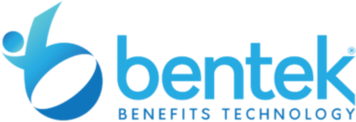Did you know that the rising costs of retiree benefits pose a significant challenge to the financial sustainability of public sector organizations? According to MetLife, 89% of employers say controlling the cost of core benefits is a top priority, and with healthcare and pension costs skyrocketing, many HR professionals in government and education organizations find themselves in a tight spot.
Balancing the scales between offering competitive retiree benefits and managing budget constraints is no small feat. This article looks at the art and science of affordable retiree benefits management, shedding light on cost-saving strategies that don’t compromise on value. From leveraging technology to optimize plan design, to exploring alternative benefits models and smart retiree benefits funding strategies, we’ve got you covered.
Prepare to unlock actionable insights that promise to lower healthcare costs for retirees, ensure retiree benefits compliance without overspending, and much more. How can HR leaders navigate these murky waters without sinking the ship? Let’s explore together.
Introduction: The Financial Challenge of Retiree Benefits – Why the Cost Factor of Retiree Benefits Matters
Managing retiree benefits costs effectively is paramount for ensuring the financial health and sustainability of public sector organizations. The delicate balancing act between offering competitive retiree benefits and keeping these costs in check demands strategic foresight, innovative thinking, and robust planning.
- The Importance of Efficient Management: With the financial stakes higher than ever, the need to streamline retiree benefits management becomes evident. According to Marsh McLennan Agency, 75% of employees’ health benefit costs went up last year, with the most common culprits being increased pharmaceutical and healthcare needs. Rising healthcare and prescription drug costs for retirees are driving up overall benefits expenses, placing a heavy burden on organizational budgets. Efficient management of these costs is not just a financial imperative; it’s a strategic necessity that impacts the organization’s long-term viability and its ability to attract and retain talent.
- The Challenge: Offering comprehensive retiree benefits is essential for competitive positioning in the public sector. However, the escalating costs associated with these benefits pose a significant challenge. Organizations must navigate the complex landscape of pension and retirement plan liabilities, compliance and regulatory costs, and administrative inefficiencies, all while striving to maintain a high standard of benefits for their retirees.
- The Role of Strategic Planning and Technology: Embracing innovative benefits administration and data analytics can significantly reduce costs and improve the management of retiree benefits. By optimizing plan design, automating administrative tasks, and making data-driven decisions, organizations can enhance cost efficiency without compromising the quality of retiree benefits. Strategic planning enables HR leaders to forecast future costs accurately, plan for sustainable funding strategies, and ensure compliance with regulatory standards without overspending.
The journey towards affordable retiree benefits management is complex but achievable. By prioritizing strategic planning and leveraging technology, public sector organizations can navigate the financial challenges of retiree benefits, ensuring a balanced approach that benefits both the organization and its retirees. What strategies and technologies will prove most effective in reducing these costs while maintaining, or even enhancing, the value of retiree benefits?
Key Cost Challenges in Retiree Benefits Management
Rising Healthcare Costs
According to Aflac, 54% of public sector workers are anxious about healthcare costs beyond what their insurance covers. The ever-increasing healthcare and prescription drug expenses represent a significant burden for these organizations. The trend of escalating costs is not showing any signs of slowing down, making it crucial for HR professionals to seek strategies that can effectively curb these expenses.
- Impact on Benefits Costs: Rising healthcare costs directly contribute to the overall increase in benefits expenses. As retirees live longer, the demand for medical services and prescription drugs rises, further inflating costs.
- Strategies for Mitigation: One effective strategy is the adoption of Health Savings Accounts (HSAs) and wellness programs. These initiatives can encourage healthier lifestyles among retirees, potentially reducing the need for costly medical interventions.
- Cost Management: Negotiating better rates with healthcare providers and exploring bulk purchasing for prescription drugs are also pivotal in managing these rising costs.
Pension & Retirement Plan Liabilities
Pension and retirement plan liabilities present long-term financial commitments that can strain organizational budgets. The challenge lies in balancing these obligations with the need to maintain fiscal stability.
- Long-term Financial Impact: These liabilities represent promises made to employees, and as such, they exert considerable pressure on future budgets. The growing gap between pension assets and liabilities poses a risk to financial stability.
- Mitigation Strategies: Reevaluating plan designs, adjusting contribution rates, and exploring alternative funding strategies, such as pension obligation bonds, may offer some relief. Additionally, adopting more conservative investment assumptions can lead to more predictable financial planning.
Compliance & Regulatory Costs
Adhering to legal standards, including the Affordable Care Act (ACA) and the Health Insurance Portability and Accountability Act (HIPAA), introduces additional financial and administrative burdens on organizations.
- Understanding the Costs: Compliance with these regulations often requires significant investment in administrative processes, training, and technology upgrades.
- Minimizing Expenses: Streamlining reporting processes and leveraging technology to automate compliance tasks can reduce the labor and costs associated with regulatory adherence. Engaging in proactive compliance planning can also help avoid costly penalties.
Administrative Inefficiencies
Outdated administrative processes in benefits management can lead to unnecessary expenses, diverting resources away from other critical needs.
- Identifying Inefficiencies: Common inefficiencies include manual data entry, paper-based filing systems, and siloed information, all of which contribute to higher administrative costs and errors.
- Potential Savings: Modernizing benefits management systems through the integration of automated solutions and data analytics can yield significant savings. These technologies not only reduce the cost of administrative tasks but also provide valuable insights for decision-making.
By addressing these key cost challenges, HR professionals in government and education organizations can better manage retiree benefits expenses. The strategic application of cost-saving measures, technology, and compliance strategies plays a crucial role in maintaining the balance between offering competitive retiree benefits and ensuring financial sustainability.
Strategies for Cost-Effective Retiree Benefits Management
Optimizing Plan Design
Adjusting plan contributions, coverage tiers, and funding approaches offers a strategic pathway to enhance cost efficiency without compromising on the quality of retiree benefits.
- Adjust Plan Contributions: Review and possibly adjust the percentage of premiums paid by retirees versus the organization. A slight increase in retiree contributions, when feasible, can significantly offset costs.
- Introduce Varied Coverage Tiers: Implementing a tiered system where retirees can choose from a range of coverage options based on their needs can lead to more efficient use of resources.
- Consider Alternative Funding Approaches: Explore options such as pre-funding retiree benefits or adopting a defined contribution plan for new hires to stabilize long-term costs.
Leveraging Technology
The automation of administrative tasks can significantly reduce overhead and enhance process efficiency.
- Automate Enrollment and Management Processes: Implementing a system that automates enrollment, benefits management, and claims processing can drastically reduce manual labor and associated costs.
- Utilize Cloud-Based Solutions: Cloud-based HR systems can offer scalable, efficient solutions for benefits administration, allowing for better data management and integration capabilities.
- Invest in Self-Service Platforms: Empowering retirees with self-service portals for benefits management can reduce administrative workload and provide retirees with immediate access to their benefits information.
Exploring Alternative Benefits Models
Introducing Health Savings Accounts (HSAs), voluntary benefits, and wellness programs can not only lower costs but also promote healthier lifestyle choices among retirees.
- Implement HSAs: For eligible retirees, HSAs offer a way to save for medical expenses on a tax-advantaged basis, potentially reducing the need for more expensive plan options.
- Offer Voluntary Benefits: Voluntary benefits, such as dental, vision, or life insurance, can be offered at no direct cost to the organization but provide added value to retirees.
- Promote Wellness Programs: Wellness programs can help retirees manage chronic conditions more effectively and adopt healthier lifestyles, potentially reducing future healthcare costs.
Negotiating with Providers
Effective negotiation with healthcare and service providers can secure better rates and cost savings.
- Leverage Collective Bargaining Power: Pooling together with other organizations or through consortia to negotiate with healthcare providers can lead to more favorable rates.
- Review and Renegotiate Contracts Regularly: Regularly revisiting contracts with providers ensures that terms remain competitive and cost-effective.
- Seek Value-Based Care Arrangements: Encourage arrangements with providers that focus on the quality of care and outcomes rather than the volume of services, which can lead to lower costs and better health for retirees.
Data-Driven Decision Making
Utilizing analytics to identify savings opportunities and optimize benefits spending is vital in managing retiree benefits costs effectively.
- Analyze Trends and Utilization Patterns: Use data analytics to understand how retirees are using their benefits and identify areas where adjustments could lead to savings.
- Benchmark Against Peers: Comparing plan costs and outcomes against similar organizations can highlight opportunities for improvement and negotiation.
- Implement Predictive Analytics: Use predictive analytics to forecast future costs and liabilities, allowing for proactive adjustments to benefits offerings and funding strategies.
By adopting these strategies, HR professionals in government and education organizations can navigate the complexities of retiree benefits management more effectively. Balancing affordability with the need to provide competitive retiree benefits requires a multifaceted approach, leveraging technology, optimizing plan design, exploring alternative benefits models, negotiating smarter, and making data-driven decisions. These efforts will not only ensure the sustainability of retiree benefits but also contribute to the overall financial health of the organization.
Sustainable Approaches to Long-Term Cost Management
Future-Proofing Retiree Benefits
Creating a sustainable model for retiree benefits involves aligning these offerings with broader financial sustainability goals. Given the escalating costs associated with healthcare and pensions, this alignment is not just preferable but essential. Strategies include:
- Long-term Financial Planning: Develop a comprehensive financial model that anticipates future cost increases and incorporates these projections into current budgeting processes.
- Innovative Funding Strategies: Explore alternative funding mechanisms such as retiree benefits trusts or dedicated investment accounts that can generate income to support benefits payouts.
- Plan Design Adjustments: Regularly review benefit plans to ensure they remain in line with organizational objectives and financial capabilities, making adjustments as necessary to maintain sustainability.
Improving Retiree Engagement
Active engagement with retirees in managing their healthcare choices can lead to more cost-effective use of benefits. This engagement can take several forms:
- Educational Programs: Implement programs that inform retirees about the most cost-effective ways to use their healthcare benefits, including the use of preventive care and generic medications.
- Feedback Mechanisms: Establish channels through which retirees can provide feedback on their benefits and suggest improvements, fostering a sense of ownership and responsibility.
- Personalized Communication: Use targeted communications to provide retirees with information relevant to their specific health conditions or benefits usage, encouraging smarter healthcare choices.
Ensuring Compliance Without Overspending
Navigating the regulatory environment without incurring unnecessary costs is a challenge. However, compliance can be achieved efficiently with the right strategies:
- Stay Informed: Maintain an up-to-date understanding of all relevant regulations, including ACA and HIPAA, to ensure all benefit plans are in compliance and avoid costly penalties.
- Efficient Reporting: Invest in systems that streamline compliance reporting, reducing the administrative burden and associated costs.
- Proactive Legal Review: Regularly consult with legal experts to preemptively address compliance issues before they result in fines or litigation.
Measuring Success
Evaluating the effectiveness of retiree benefits management strategies is crucial for continuous improvement. Key Performance Indicators (KPIs) should include:
- Cost Trends: Monitor changes in the total cost of retiree benefits over time, aiming for stability or reduction in costs relative to inflation and healthcare cost trends.
- Retiree Satisfaction: Use surveys and feedback tools to gauge retiree satisfaction with their benefits, aiming for high levels of satisfaction as an indicator of program success.
- Utilization Rates: Track the utilization rates of different benefits, especially preventive care and wellness programs, to ensure retirees are making cost-effective healthcare choices.
- Compliance Metrics: Regularly review compliance metrics to ensure that the organization remains within regulatory guidelines, thereby avoiding penalties.
By focusing on these sustainable approaches, HR professionals in government and education organizations can manage retiree benefits costs effectively while continuing to provide competitive and comprehensive benefits packages. This not only ensures the financial health of the organization but also supports the well-being of its retired employees.
For more articles like this, check out the Bentek Blog!




